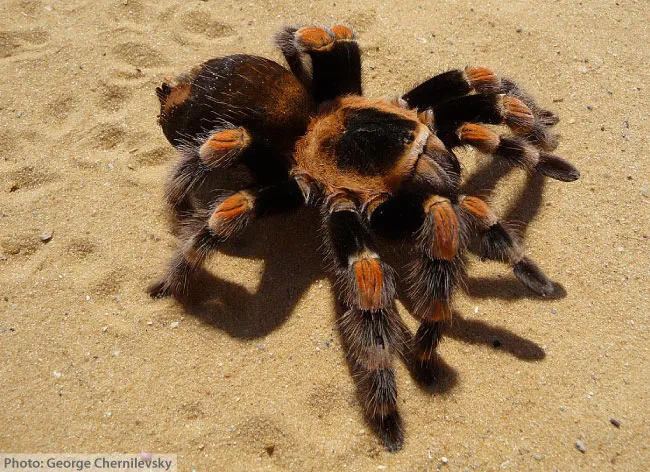What is the Mexican Redknee Tarantula?
The Mexican Redknee Tarantula (Brachypelma hamorii), formerly known as Brachypelma smithi, is a popular and captivating species of tarantula native to the Pacific coast of Mexico. Known for their striking appearance, featuring a black body and vibrant red-orange markings on their leg joints (knees), these arachnids are a favorite among both novice and experienced tarantula keepers. They are relatively docile compared to some other tarantula species, which contributes to their widespread appeal as pets. Their lifespan, which can extend up to 20-30 years for females, and their manageable size make them a fascinating addition to any home. Understanding their basic characteristics is crucial for anyone interested in owning or learning more about these remarkable creatures. The vibrant coloration and relatively calm demeanor make them a beautiful and interesting pet.
Basic Biology of the Mexican Redknee Tarantula
Mexican Redknee Tarantulas, like all tarantulas, are arthropods belonging to the class Arachnida. They possess eight legs, two chelicerae (fangs), and a body divided into two main parts: the cephalothorax (fused head and thorax) and the abdomen. Their bodies are covered in a hard exoskeleton made of chitin, which they shed through a process called molting as they grow. The species is characterized by its relatively slow growth rate, especially during the early stages of life. The females live longer than males, and males typically mature faster. Their biology involves internal fertilization, with females laying eggs in a silk egg sac. The understanding of these basic biological facts helps with proper care and understanding of their life cycle.
Habitat and Behavior
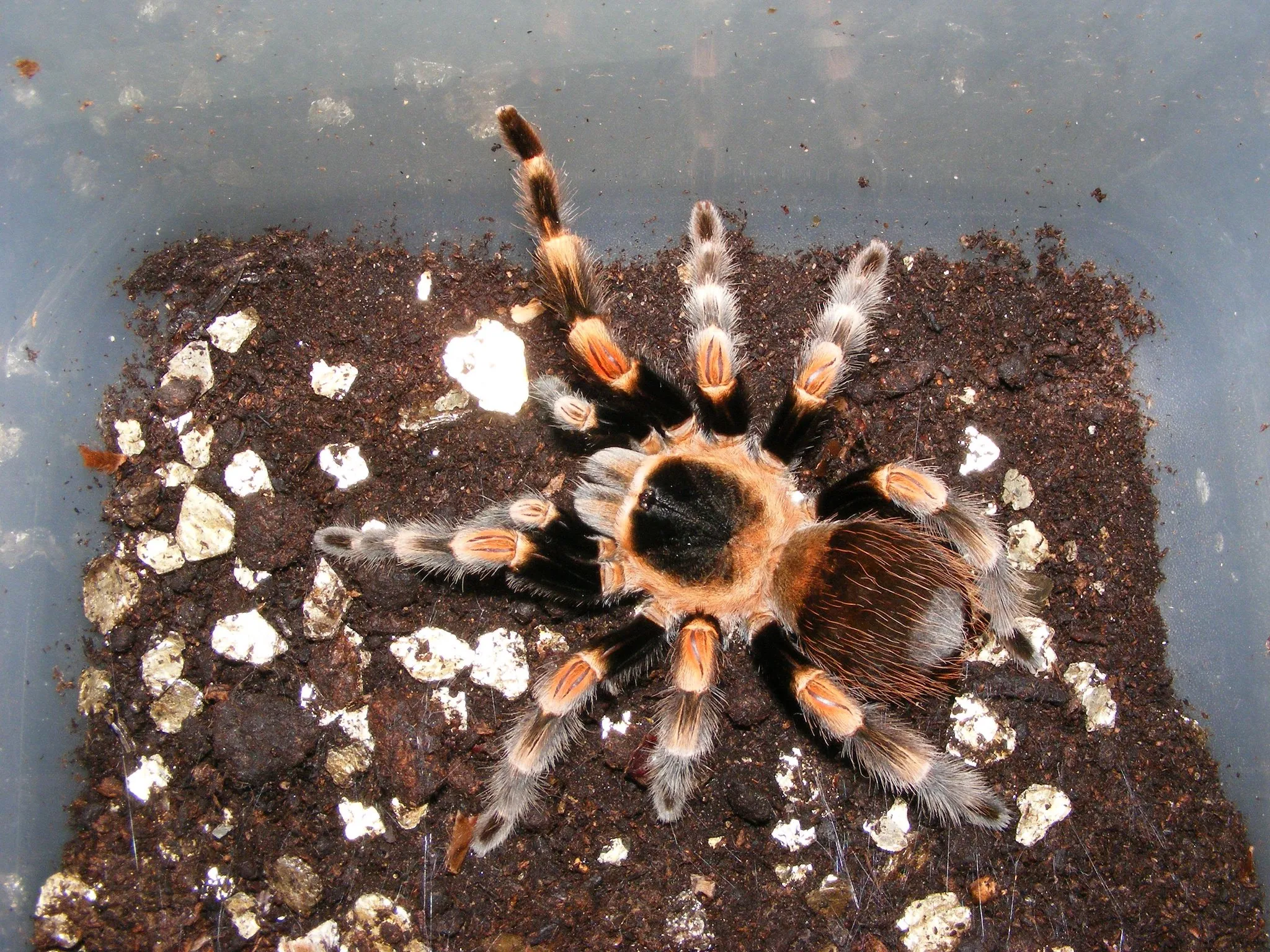
In their natural habitat, Mexican Redknee Tarantulas are terrestrial spiders that live in burrows, often found in scrubland and tropical deciduous forests. They are nocturnal hunters, primarily preying on insects and occasionally small vertebrates. Their behavior is typically calm, but they can become defensive if threatened, often raising their front legs in a threat posture or flicking urticating hairs from their abdomen as a defense mechanism. In captivity, they require a habitat that mimics their natural environment, including appropriate substrate for burrowing, a hide, and a water source. They are generally solitary creatures, preferring to live alone. Understanding their habitat and behavior in both the wild and captivity is critical for providing them with a suitable environment and ensuring their well-being.
Fact 1: Is the Mexican Redknee Tarantula Poisonous?
The short answer is no, Mexican Redknee Tarantulas are not poisonous. The term “poisonous” applies to something that is harmful when ingested, inhaled, or absorbed through the skin. Tarantulas, however, deliver their venom through a bite. This distinction is critical when discussing their toxicity. They possess venom glands, and when they bite, they inject venom into their prey or, in rare cases, into a human. The venom’s primary function is to subdue their prey, not to kill them immediately. While their venom is not typically life-threatening to humans, it can cause a range of symptoms. The level of toxicity is a crucial factor to understand about tarantulas.
The Difference Between Venom and Poison
The terms “venomous” and “poisonous” are often used interchangeably, but they have distinct meanings in the context of biology. Venom is injected into a target through a bite or sting, while poison is ingested, inhaled, or absorbed. For example, a poisonous plant will cause harm if eaten, while a venomous snake injects toxins through its fangs. Tarantulas are venomous because they use their fangs to inject venom. Knowing the difference helps in understanding how these creatures interact with their environment and how their toxins affect other organisms, including humans. This distinction impacts how we perceive and respond to potential threats and risks.
How Tarantulas Use Venom
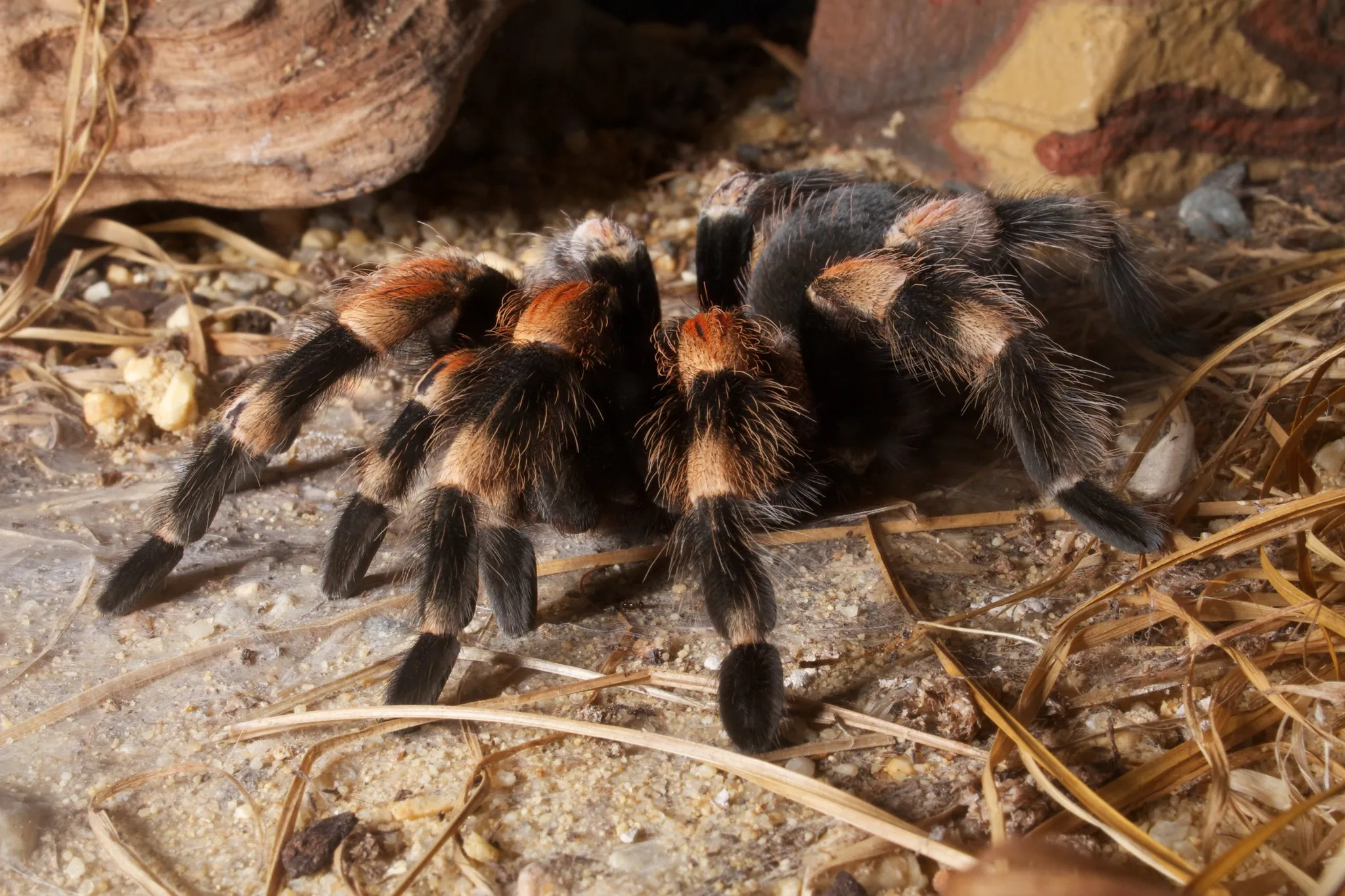
Tarantulas use their venom primarily to subdue and kill their prey. The venom contains a complex mixture of toxins that can paralyze or incapacitate insects and other small animals. When a tarantula bites its prey, the venom is injected through its fangs, which act like hypodermic needles. The venom begins to take effect, causing paralysis, allowing the tarantula to feed on its meal. The specific composition and potency of the venom vary among different tarantula species, but the core function remains the same. The venom is highly effective against invertebrates, making it a successful hunting strategy. Understanding how tarantulas employ venom helps us understand their place within the ecosystem.
Fact 2: Toxicity of the Mexican Redknee Tarantula Bite
The venom of the Mexican Redknee Tarantula is considered to be of low toxicity to humans. A bite from this species is rarely life-threatening, but it can still cause discomfort. The primary effects of a bite include localized pain, redness, and swelling at the bite site. The severity of the reaction can vary depending on the individual, with some people experiencing minimal symptoms and others experiencing more pronounced effects. Typically, the symptoms subside within a few hours or days. Unlike some other venomous creatures, tarantula venom is not designed to cause systemic effects in humans. The level of toxicity is a critical factor to consider.
Symptoms of a Mexican Redknee Tarantula Bite
The symptoms of a Mexican Redknee Tarantula bite typically include localized pain, similar to a bee sting, and some minor swelling and redness around the bite site. Some individuals may experience muscle cramps or spasms, and in rare cases, mild nausea. The symptoms are usually self-limiting and subside within a day or two. Other potential symptoms include itching, tingling, and a burning sensation. There is no specific antidote for tarantula venom, and treatment focuses on symptom management. It is important to monitor the bite site for any signs of infection or a more severe reaction. It is crucial to note down these signs and symptoms so that you can treat them appropriately.
First Aid for a Tarantula Bite
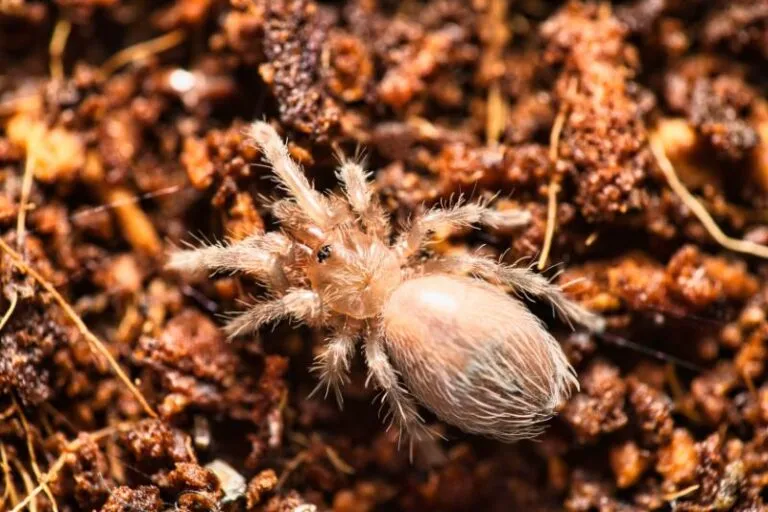
If bitten by a Mexican Redknee Tarantula, the first step is to remain calm. Wash the bite area thoroughly with soap and water to prevent infection. Apply a cold compress to reduce swelling and pain. Over-the-counter pain relievers, such as ibuprofen or acetaminophen, can help manage the discomfort. It is important to monitor the bite site for any signs of infection, such as increased redness, swelling, or pus. Seek medical attention if you experience severe symptoms, such as difficulty breathing, dizziness, or a widespread allergic reaction. Keeping the wound clean and monitoring for any adverse symptoms are key aspects to dealing with the situation. It is also advised to keep an eye on the bite site.
Fact 3: Allergic Reactions to Tarantula Bites
Although rare, some individuals may experience an allergic reaction to a tarantula bite. This occurs when the immune system overreacts to the venom. Allergic reactions can range from mild to severe, and recognizing the symptoms is critical. People with pre-existing allergies or sensitivities may be at a higher risk. If you have any known allergies, you should be extra careful when handling these creatures, and it is important to have immediate medical attention.
Recognizing Allergic Symptoms
Common symptoms of an allergic reaction to a tarantula bite include hives, itching, swelling (especially of the face, lips, or tongue), difficulty breathing, wheezing, and dizziness. In severe cases, an allergic reaction can lead to anaphylaxis, a life-threatening condition that requires immediate medical attention. Symptoms of anaphylaxis include a sudden drop in blood pressure, loss of consciousness, and difficulty breathing. It is important to be able to recognize these signs so that you can seek immediate treatment. Always seek medical assistance if there are any serious symptoms.
Medical Treatment for Allergic Reactions

Treatment for an allergic reaction to a tarantula bite depends on the severity of the reaction. Mild reactions may be treated with antihistamines to reduce itching and swelling. For more severe reactions, epinephrine (an EpiPen) may be necessary to counteract the effects of anaphylaxis. Medical professionals may administer oxygen and other supportive treatments to stabilize the patient. If you suspect that you or someone you know is experiencing a severe allergic reaction, seek immediate medical attention. It is a life-saving measure. Quick response is a critical factor for recovery.
Fact 4: Are Mexican Redknee Tarantulas Dangerous to Humans?
Generally, Mexican Redknee Tarantulas are not considered highly dangerous to humans. Their venom is of low toxicity, and bites are rarely life-threatening. However, there are factors that can increase the potential for harm. These factors include allergic reactions, the potential for infection at the bite site, and the stress and anxiety associated with being bitten. While the bite itself may not be lethal, the psychological impact or an allergic reaction can lead to more serious health issues. This makes it imperative to be aware of the inherent risks.
Risk Factors Associated with Tarantulas
The main risks associated with keeping or handling Mexican Redknee Tarantulas include the possibility of being bitten, the potential for an allergic reaction, and the risk of infection. While bites are not typically severe, they can be painful and cause localized reactions. Allergic reactions, though rare, can be serious. Improper handling can lead to bites, and failing to keep the bite site clean can result in an infection. Handling and care practices significantly impact these risks. Knowing about these factors and adhering to safety protocols will help reduce the likelihood of adverse reactions.
Handling and Safety Precautions
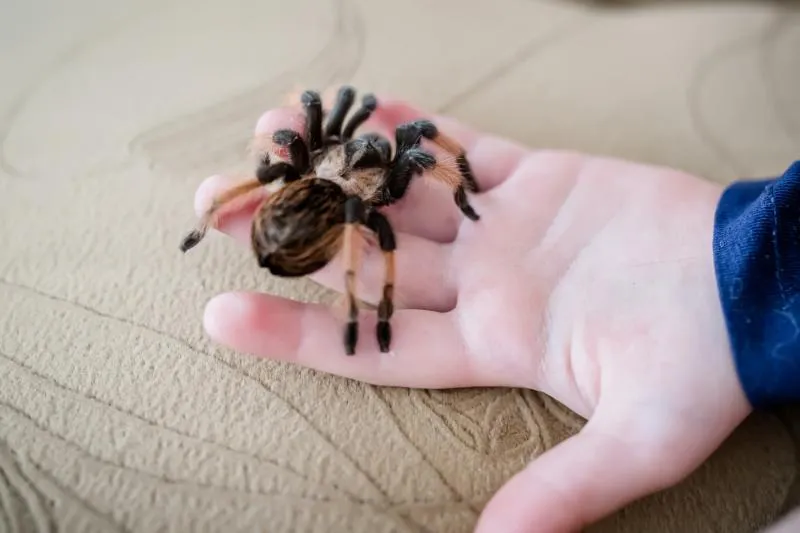
When handling Mexican Redknee Tarantulas, it is essential to take precautions to minimize the risk of being bitten. Avoid sudden movements or actions that might startle the spider. Handle them in a safe environment, such as over a soft surface, to prevent injury if they fall. Use tools, such as tongs or a soft brush, to move them if necessary. Wash your hands thoroughly before and after handling to prevent the spread of any potential irritants or infections. If you do get bitten, remain calm, clean the wound, and seek medical attention if necessary. Always prioritize safety when handling these beautiful creatures.
Fact 5: Prevention and Safety Measures
The best way to prevent problems with Mexican Redknee Tarantulas is to handle them carefully and follow proper care guidelines. This includes understanding their natural behavior, providing a safe and appropriate habitat, and practicing responsible pet ownership. By taking these measures, you can minimize the risk of bites and other adverse effects. Taking preventive steps makes a big difference in the overall safety and wellbeing of both the owner and the pet.
Safe Handling Techniques
To handle a Mexican Redknee Tarantula safely, it’s crucial to be calm and deliberate in your movements. Avoid sudden motions or loud noises. Consider using a soft brush to gently guide the tarantula onto your hand or a container. Always supervise children and keep the spider in a secure enclosure. If you are unsure about handling the tarantula, it is best to admire it from a distance. Make sure to be mindful of their posture and signals, and learn to recognize when the tarantula may feel threatened, such as when it raises its front legs as a threat posture. Be cautious, and avoid handling when possible, to protect yourself and your tarantula.
Responsible Ownership of Mexican Redknee Tarantulas
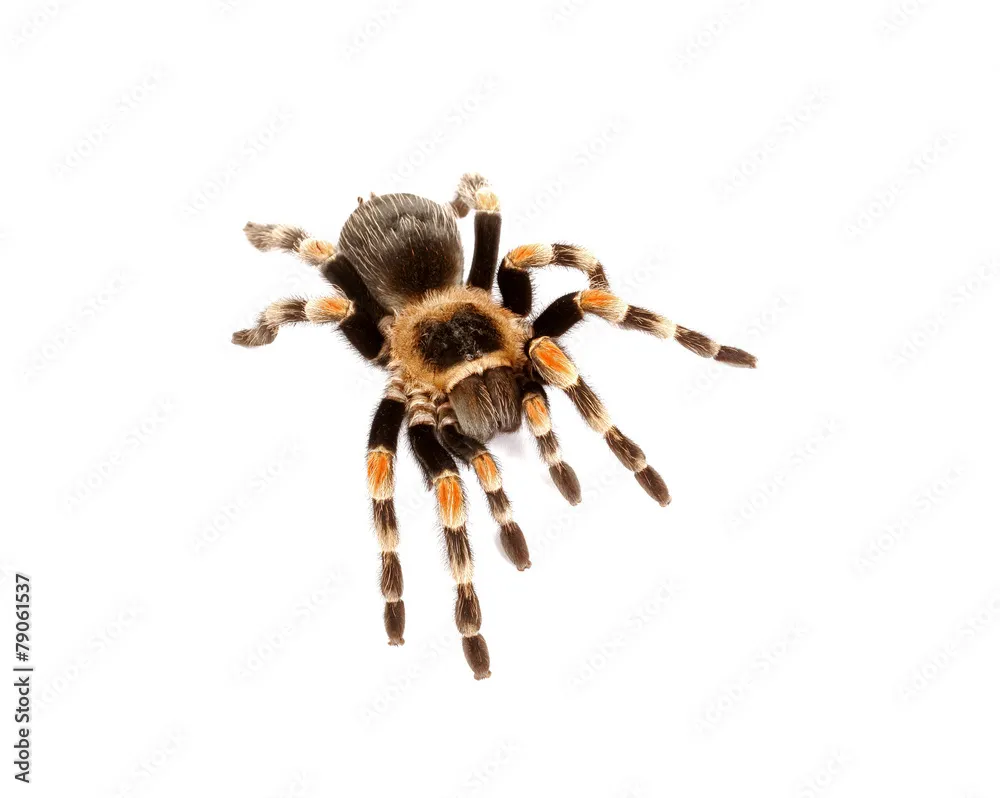
Responsible ownership of a Mexican Redknee Tarantula involves understanding its needs, providing a proper environment, and handling it safely. Research the specific requirements of this species regarding housing, temperature, humidity, and diet. Provide a habitat that mimics its natural environment, with appropriate substrate for burrowing, a hide, and a water source. Feed it a diet of appropriate-sized insects. Keep a close watch for any signs of illness or distress, and provide the necessary care. By taking these steps, you can ensure the well-being of your pet tarantula, and you can enjoy the unique experience of owning these fascinating creatures.
